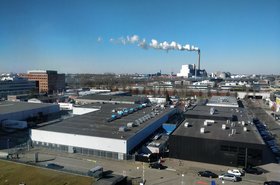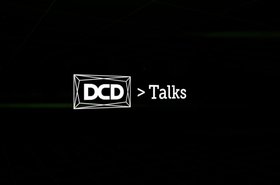If we lived in a world where legislation was written according to business rules, the problem statement facing Amsterdam’s legislators might read: “IT servers are using too much power when not processing data and they should stop using valuable electricity by entering sleep mode.”
The reasons for attempting to address the problem of server power use are valid. Across the globe energy costs are skyrocketing, energy security remains fragile, energy transition to net zero is long term and waste is not in anyone’s interest.
So, if we skip forward a couple of steps, we find ourselves closer to a situation where the potential risk of legal fines being imposed upon data center operators who don’t enforce sleep state operation for idle servers in ‘large or very large’ facilities – is real. ‘Large or very large’ covers pretty much all commercial data centers in and around Amsterdam.
Cue threats of court action and some finger pointing from interested parties on how we got here.
This is not new
While there are many angles to this complex puzzle – such as who does a sleep state law directly apply to - the first thing to acknowledge is that the idea of reducing server power draw in sleep state is principally a good one. And it is not new.
Back in 2014, in work it was carrying out for the Government of Singapore, i3 Solutions Group wrote: “Currently the most significant issue affecting server energy performance is the power used at zero processor utilization. Intuitively one would expect this to be zero or close to zero; instead, the average is 50 percent of the maximum power consumption. Techniques such as device power‐down and invoking processor sleep states can address this problem. The drawback of this is a latency penalty as additional time is required to wake from a sleep state in response to demand spikes.”
What state are we in?
What is somewhat extraordinary is that during the ensuing eight or so years, there has been a dearth of academic and industry papers from server chip manufacturers about power management as it applies to power optimization in P states (performance states) and in various C states (when no processing is occurring).
There appears to be very little available data on power use during zero processor utilization, powering down and powering up options of the various processor sleep states – and the related carbon and energy savings potential of intelligent power management.
One paper fromWerner Fischer of the Knowledge Transfer team at Thomas-Krenn (from 2017) provides an overview of P-states (optimization of the voltage and CPU frequency during operation) and C-states (optimization of the power consumption if a core does not have to execute any instructions.).
The idea of extending this to operate at scale across thousands of servers looks challenging - and the idea would also have to be updated to current processors.
For data center operators of commercial data centers, Amsterdam’s proposed Server Sleep State legislation throws up several problems, not the least of which; is it the data center operators who will be responsible for forcing their clients to put servers into sleep state when idle? The challenge with this is that it is not yet clear that users/clients know how to do this.
What happens in the white space…?
Commercial data center operators control the physical white space but not the IT, nor the workloads that run within. We no longer live in a world of batch processing and steady state applications, workloads stream across physical servers. Dynamically allocating workloads to a given data center, never mind to particular servers, is highly complex.
Add to this that it is the decoupling of control of IT from the burden of running the physical environment of power, space and cooling, that is the very reason for the existence of the commercial data center industry.
Also, it is probably fair to comment that at this stage, despite ten or more years of DCIM, within many large and very large commercial data center operations there is limited data even on the power availability and amount of power being delivered to specific rack units at any given time.
The notion that every server is on an individual power meter is rather fanciful. And while modern rack PDUs may have metering features, the reality of checking the power state of a server every minute or hour is simply not feasible. Who is monitoring the power draw of individual servers by capturing that data?
Commercially it may become a differentiator for data center operators to demand that clients have a data center server power management policy in place as part of a contract. And that such a policy includes a commitment to minimization of power use through server sleep states. It would certainly add to their sustainability credentials.
It would, of course require that the operator then take responsibility to police said policy.
One law to rule them all
All of this might be a case of Amsterdam lawmakers proposing and potentially imposing a principled regulation which will help spur or even force the data center and IT industries to accelerate advances that address climate change.
The very fact that it is on the horizon could and should be a catalyst for all commercial and enterprise data center operators and their enterprise clients to act now.
So, let’s say legislators refuse to back down. What to do?
There are technologies under development for tracking server CPU operation that promise to automatically change the processor configuration C/P state using AI algorithms and thus drive down energy use, cost and carbon footprint. By capturing telemetry from the CPUs combined with AI algorithms to suggest when to enter certain C/P-states, tracking servers/ CPUs to increase efficiency (such as changing C/P-state) can be provided together with displays of carbon/ power savings.
Conclusion
Professing concern about climate change and then complaining about the complexity of reducing power use by servers when not doing useful work is a contradiction too far.
Even if it means that someone has to end up in court, it could be that the Dutch lawmakers may prove to be the pathfinders that force the industry to find sleep state solutions.
Good technology applied through strong regulation is the likely roadmap to get IT server owners and commercial data center owners to collaborate more closely on cutting energy use and thus making real carbon savings.
Governments are committed to cutting carbon to address the climate crisis and regulation is their tool. What’s happening in Amsterdam is being watched closely around the world.





